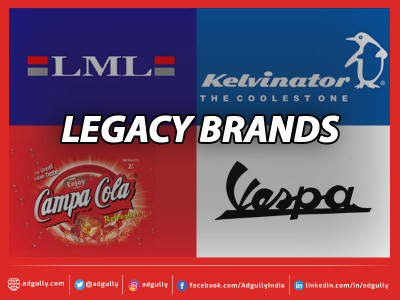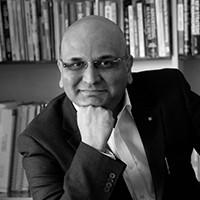When nostalgia isn’t enough - Why legacy brands find it tough to make a comeback?
In the last two years, we have witnessed many legacy brands taking a new birth. We saw Kelvinator and BPL getting revived in the consumer durables category. Both of them were iconic brands and ruled the market in the 80’s and the 90’s. In both the cases, Reliance Retail was instrumental in bringing them back. Recently Reliance also announced to revive the Pure Drinks brand Campa Cola this Diwali in a market which is ruled by Coke, Thums Up and Pepsi.
API (Automobile Products of India) used to manufacture the famous Lambretta brand of scooters. It was the first Indian scooter manufacturer. The early models were the Lambretta 48, a 48-cc moped and the D and LD – Series of scooters. This brand of scooter is now going to re-enter the Indian market in a new avatar, which will be the electric version. They are going to partner with Bird Mobility for the comeback in India. According to news reports, the Lambretta electric scooters will launch their premium version of their models. Lambretta has a tough challenge in hand as the residual equity of this brand hardly exists and the generation that experienced the earlier Lambretta is way past its prime. How much of that brand equity will be leveraged remains to be seen. It is almost like a brand new product launch from scratch with new features.
In the case of Campa Cola, Reliance Retail has its strength, but when it comes to a soft drink brand, the penetration has to be deeper and it should be easily accessible to consumers. Which is where brand leaders like Thums Up, Coke and Pepsi enjoy a strong distribution and reach. It will not be that easy for Campa to build a strong distribution network in a highly competitive market. The fans and audiences of the Campa of yore have moved on. The younger breed of consumers has almost zero association with the brand.
So, what’s in it for the legacy brands? Most legacy brands are almost over 3 decades old and catered to a different generation. Today, when these legacy brands seek to re-enter the market, they are selling and talking to a totally a new breed of audiences who hardly remember the earlier equity and values that these brands delivered years back. While the market presents an opportunity, but one is not sure whether they can stick to their old promise and positioning. Injecting a fresh breath of life into an age-old brand will be a huge challenge as the brand needs to meet the new desires and aspirations of the new generation consumer.
In today's cluttered, competitive marketplace, it is tempting for businesses to revive old brands, and leverage existing awareness and equity, rather than build a new brand from scratch. As shared by Nisha Sampat, Managing Partner, Bright Angles Consulting LLP, “The catch is that the equity resides in the minds of an older generation, like the Boomers, whereas the brand needs to acquire a younger generation of consumers. These young consumers probably have no associations with the brand, beyond awareness of the name – it’s a clean slate.”
Soumya Mohanty, Managing Director, Insights Division, Kantar, observed, “Nostalgia makes us feel reassured and optimistic. Amul tried it by bringing back the ads that used to run during the 90’s airing of ‘Ramayan’ and ‘Mahabharat’. Similarly, when Levi’s brings back its classic design, its appeal is cross-generational. But these are existing brands. Relaunching legacy brands in an era of digitisation, when consumers can buy nostalgia NFTs, needs something stronger beyond nostalgia.”
Sampat added here, “Business leaders hope that communication will aid consumers to ‘join the dots’ between the past and the present, but it is easier said than done. Legacy can become a liability, rather than an asset. Young audiences may not aspire to use a brand just because their parents and grandparents did. In India, we see many old brands who struggle to stay relevant, extend into new categories, or charge a premium over competition.”
“Legacy can also backfire, if consumers feel that quality and service standards do not match up to the past,” she warned.
Marketers cannot afford to fall back on legacy, assuming it will automatically work magic for them. They need to reassure consumers that their offerings are innovative and aligned to modern day aspirations. They need to focus on re-defining themselves to stay relevant to future generations.
Quoting renowned branding expert Anand Halve, Anirban Mozumdar, Chief Strategy Officer, 82.5 Communication, said, “The most valuable real estate in the world is the space in the consumer’s mind”. Brands from earlier have that invaluable asset and it is worth billions. In a world of increasing fragmentation (read, more opportunities), bringing in a familiar Brand is bringing alive and taking advantage of all the “intangibles” and associations it has. “Many of these brands left at that time because of product/ technology obsolescence caused by newer, better alternatives. They are now making a comeback in an era where equity and fan-following are more valuable than features or benefits!” he added.
Will they work? If they get in touch with their unchanging core (not product, the brand idea) and connect with a new generation in a new age, they will work.
How will the new, younger generations, who may not have seen or interacted with these brands, connect with history? “There is an opportunity,” believes Mozumdar, who has been part of the Jawa relaunch. “Retro and brands from an earlier era appeal because they hark from a simpler time – a lovable, charming anachronism in this complex, hyper-informative, low-empathy, technology era,” he noted.
Whether nostalgia can still drive brands or not, Mohanty said that in the case of Campa Cola, it is the retail strength of Reliance. Besides, at brand level CSDs have always had an intangible appeal. The entire category in India was deeply emotional right up to start of this decade. People used to express their individuality in different forms. On the flip side, each existing soft drink brand has strong positioning and pack-price strategy. They also have a large portfolio which they can leverage for ‘visicooler’ space. Reliance will need deep wallets and persistence.
On the others, we have moved away from scooters; our main screen has shifted to mobile; white goods are struggling with inflation. White/ brown goods have always been about aspiration and modern technology. “Time will tell if nostalgia can drive categories like refrigerators and washing machines,” said Mohanty.
There is some section of the population who believe that the values of the old and trusted brands are still strong and credible, and brands can make a comeback if they can adapt to the current situation. Take for instance a brand like Philips, they are an old trusted brand, but by reinventing and innovating themselves they have met the aspirations of the new generation. Along similar lines, if some of the nostalgia brands will able to do well if they meet the aspirations of the current generation both in terms of design, technology backed with latest and advanced features.









Share
Facebook
YouTube
Tweet
Twitter
LinkedIn